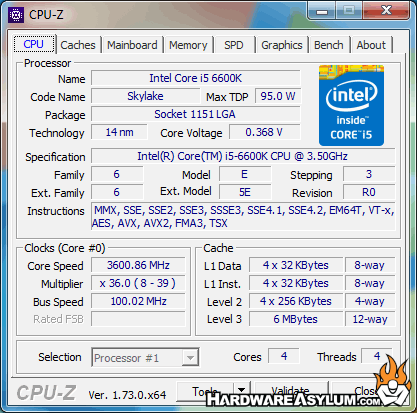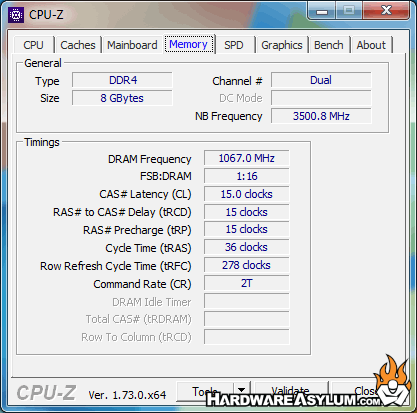Gigabyte Z170X UD5 Motherboard Review
Author: Dennis GarciaBenchmark Configuration
Gigabyte GA-Z170X-UD5 – Z170 Chipset
Intel Core i5 6600K (3.5Ghz) Quad Core 4 x 256KB L2 Cache 6MB L3 Cache
Thermaltake Water 2.0 Performer
1x nVidia GTX 980Ti
2x Corsair Vengeance LPX PC4-21300 16GB DDR4 (15-17-17-35)
Micron C300 128GB SSD
HP dvd1260i Multiformat 24x Writer
Thermaltake Toughpower Grand 1050 Watt PSU
Windows 7 Ultimate 64bit SP1
Gigabyte GA-Z97X-Gaming G1 - Z97 Chipset
Intel Core i7 4790K (4.09Ghz) Quad Core 4 x 256KB L2 Cache 8MB L3 Cache
Thermaltake Water 2.0 Performer
1x nVidia GTX 770
2x GSKill RipjawsX PC2133 4GB DDR3 (9-10-9-28)
Micron C300 128GB SSD
HP dvd1260i Multiformat 24x Writer
Thermaltake Toughpower Grand 1050 Watt PSU
Windows 7 Ultimate 64bit SP1


This review marks the first Z170 based motherboard in the Hardware Asylum review database which has some unique disadvantages. First we are using a Core i5 6600K for testing so many of the multi threaded benchmarks will not score as high given that we have no hyperthreading. DDR4 memory is also standard on Z170 and should have more bandwidth available. Overall this means most of our memory based benchmarks might score better and thus even out the reduction in thread count. Bottom line most benchmarks used in our motherboard reviews don’t care about processor threads but look at efficiencies in the entire system so while we like to have apples vs apples sometimes those apples are different colors.
Our motherboard testing suite has been compiled to subject the system to a variety of different scenarios that help uncover some of the subtle differences in motherboard design. Normally these differences are driven by the processor and BIOS programming but with the advent of an IMC and PCI Express moving to the CPU we have discovered that raw performance numbers are virtually identical across the systems.
Our new approach is to look at total system performance and minimize the variances. The results will tell us how the system responded as a total package and also give us something to use in our comparisons.

